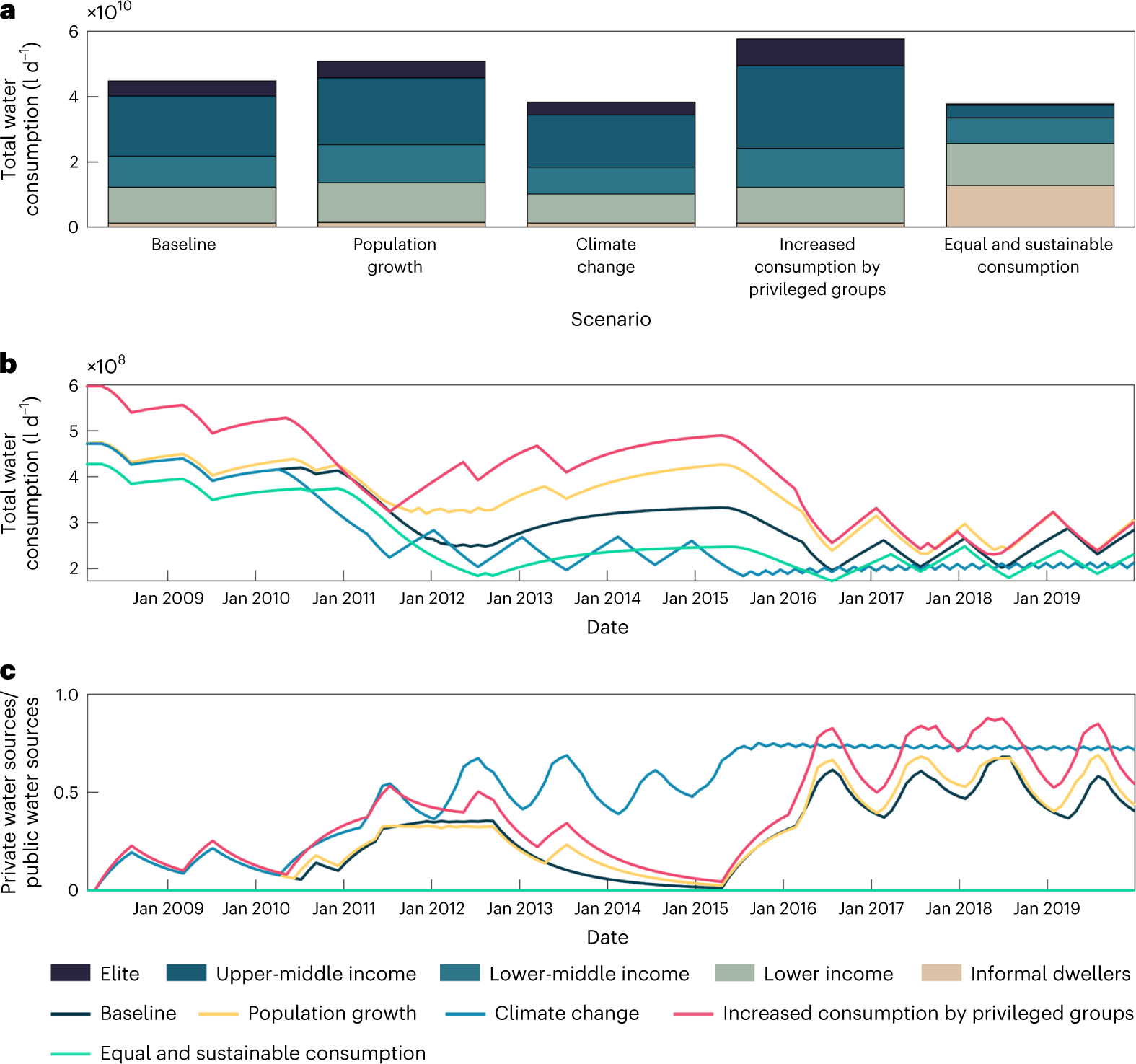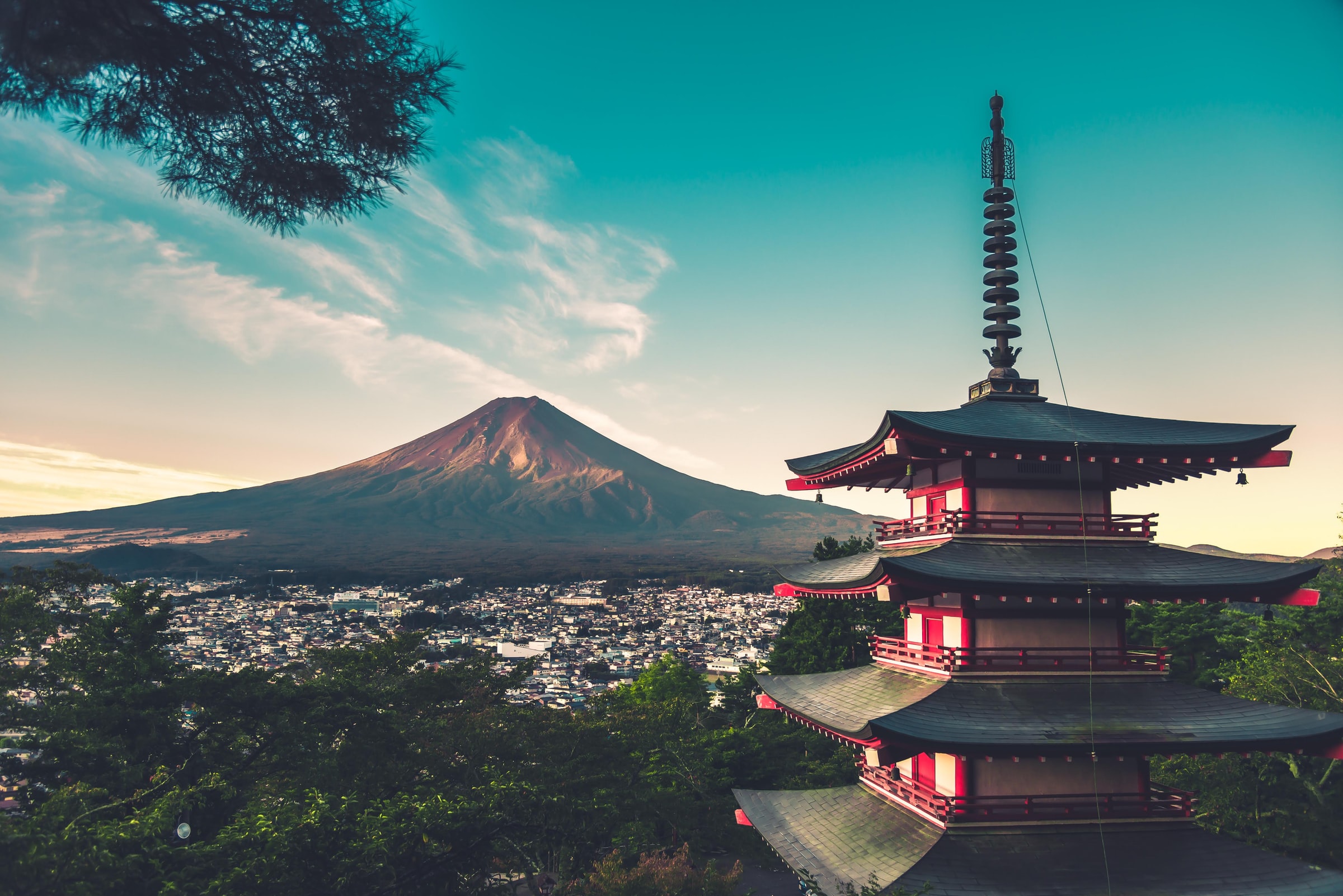Even though more than 70% of Earth’s surface is covered in water, lack of access to clean water is one of the most pressing challenges of our time. Indeed, freshwater resources are unequally distributed across both the globe and society. The already existing inequalities threaten to widen as climate change, economic development, and population growth proceed. Global freshwater use has increased by a factor of six over the past 100 years and has continued to grow at a rate of roughly 1% per year since the 1980s. According to the 2030 Water Resources Group, the world would face a 40% global water deficit by 2030 under a business-as-usual scenario.
Water consumption
Agriculture currently accounts for 69% of global water withdrawals, which are mainly used for irrigation but also include water used for livestock and aquaculture. This ratio can reach up to 95% in some developing countries. Industry (including energy and power generation) accounts for 19%, while municipalities are responsible for the remaining 12%.
Global water consumption for domestic and manufacturing use quadrupled from 1950 to 2010, with higher rates observed in the period from the 2000s. In agriculture, in the period 1971–2000, 85% of water taken from rivers, lakes, and aquifers was used for crop production, representing an average of 7,200 km3/year.
Beyond the need of water for agriculture, the problem of poor water utilisation is significant, as made evident with industrial and domestic wastewater discharge. The Food and Agriculture Organization (FAO) estimates, based on a business-as-usual scenario, that the world will need about 60% more food by 2050, and that irrigated food production will increase by more than 50% over the same period. The necessary amounts of water for these developments are not available. FAO recognizes that the amount of water withdrawn by agriculture can only increase by 10%.
Water shortages consistently rank among the global risks of greatest concern to policy-makers and business leaders. In 2016, the World Bank estimated that regions affected by water scarcity could see their growth rates decline by as much as 6% of GDP by 2050 as a result of losses in agriculture, health, income and property – sending them into sustained negative growth.

Socio-economic inequalities
According to the UN World Water Development Report 2023, between two and three billion people experience water shortages for at least one month per year, posing severe risks to livelihoods, notably through food security and access to electricity.
The global urban population facing water scarcity is projected to double from 930 million in 2016 to 1.7–2.4 billion people in 2050. Climate change is considered the main cause that is threatening the availability of water resources. However, scientific studies do not take into consideration the key role played by socioeconomic inequalities in exacerbating urban water crises.
An international team of climate scientists recently developed a new model to quantify the unequal domestic water use of different social groups, which led to a water crisis in Cape Town (in 2018, the South African capital came perilously close to reaching day zero, when the city’s taps would dry up following a long-standing drought). According to their findings, which may be extended to other metropolises, the greater economic availability of privileged groups allows them to cope with the reduced availability of public water by withdrawing water from private water sources, such as rainwater harvesting systems or wells located in their household premises, improving their level of water security after a drought.
“The results of our model showed that privileged social groups make up less than 14% of households in the city but consume 51% of the water destined for non-basic purposes such as the irrigation of residential gardens, swimming pools, and other uses. On the other hand, the social classes with the lowest incomes make up 62% of the total and consume only 27% of the water resource for essential activities such as washing and drinking,” says Maurizio Mazzoleni, assistant professor at the Water and Climate Risk department of the Institute for Environmental Studies of Vrije Universiteit Amsterdam.
Moreover, the scientists developed four independent scenarios about the implications of different drivers on the long-term patterns of urban water consumption. These include climate change with an increase in temperature of 2°C, urban population growth by 2% per year, increase in unsustainable water consumption by the privileged groups, and more equal and sustainable use of water by every socioeconomic group.

“The most unsustainable scenario is the one that foresees an increase of inequality and, in turn, unsustainable levels of water consumption among the elite and upper-middle-income groups. Conversely, the scenario that considers a more equal distribution of water across the different social groups along with more sustainable levels of consumption leads to reductions in total water use and pressure on the urban water balance,” Mazzoleni explains.
In short, changing the lifestyles of the more privileged classes, limiting the use of water for services, as well as redistributing income and water resources in a more equitable way are essential to preserve the water resources.
“Unfortunately, these strategies are in contrast with the prevailing political-economic system, based on the excessive exploitation of natural resources and on the exclusion, segregation, and marginalisation of the disadvantaged classes. For this reason, politicians and decision-makers must rethink natural disasters as a socio-environmental problem and propose reforms aimed at addressing unequal water consumption,” Mazzoleni concludes.
Decision-makers must rethink natural disasters as a socio-environmental problem and propose reforms aimed at addressing unequal water consumption
Access to safe water
Poor water quality affects various aspects of society, from the spread of disease to crop growth to infant mortality. Achieving equality in water usage is part of the sixth goal of the 2030 Agenda for Sustainable Development: the UN Sustainable Development Goal (SDG) 6.1 calls for universal and equitable access to safe and affordable drinking water by 2030.
According to the Joint Monitoring Programme report Progress on household drinking water, sanitation and hygiene 2000 – 2020, between 2016 and 2020, the global population with safely managed drinking water at home increased from 70 to 74%; safely managed sanitation services grew from 47 to 54%; and handwashing facilities with soap and water increased from 67 to 71%.
People in sub-Saharan Africa have the lowest levels of access. In 2020, for the first time, more people used improved on-site sanitation, such as pit latrines and septic tanks, which can effectively contain and treat waste, rather than sewer connections. Despite progress, only 81% of the world’s population will have access to safe drinking water at home, leaving 1.6 billion without, only 67% will have safe sanitation services, leaving 2.8 billion without, and only 78% will have basic handwashing facilities, leaving 1.9 billion without.
There is a need for governments to ensure adequate support for safely managed on-site sanitation, including faecal sludge management. To achieve universal access to safely managed drinking water by 2030, the current rate of progress in the Least Developed Countries would need to increase tenfold. In fragile contexts, where people were twice as likely to lack safe drinking water, it would need to accelerate by a factor of 23.

Water justice
The water crisis is a justice crisis because certain already-marginalised groups are further disenfranchised by water issues. Solutions to water access should be part of a broader socioeconomic development model which promotes awareness around rights and responsibilities.
The management of water resources lies with the governments, who retain a sovereign duty to ensure the human right to safe drinking water. Nevertheless, in many Least Developed Countries, access to drinking water is not recognised as a basic human right.
A report by WaterAid revealed that a standard water bill in developed countries is as little as 0.1% of the income of someone earning the minimum wage, while in a country like Madagascar a person reliant on a tanker truck for their water supply would spend as much as 45% of their daily income on water to get just the recommended daily minimum supply. In Mozambique, families relying on black-market vendors will spend up to 100 times as much on water as those reached by government-subsidised water supplies.
A poorly understood mechanism of water appropriation in a globalised world is associated with large-scale land investments in agriculture. Often known as land grabbing, this phenomenon is associated with an appropriation of freshwater resources that has never been assessed before. The intrinsic assumption is that the acquisition of water undergoes the same dynamics of unbalanced relationships that underlie many large-scale land acquisitions.
The so-called water grabbing has many different faces and forms of enclosure but always involves the capturing of the decision-making power around water, including the power to decide how and for what purposes water resources are used now and in the future.
Grabbing can happen through either simply dispossessing (un)registered users by violent appropriation; through delegitimizing claims embedded in legislation; or through market mechanisms. In some cases, the capture of water is clearly illegal, violating state law; in other cases, it is formally legal although not legitimate.
Indeed, grabbers often make use of the legal complexity surrounding water rights to achieve their aims. In all the cases, powerful actors are able to take control of or reallocate to their own benefit water resources at the expense of previous (un)registered local users or the ecosystems on which those users’ livelihoods are based. China, India, Saudi Arabia and the United Arab Emirates are among the countries noted to have made major investments in expansive agricultural projects in Africa that consume large amounts of water.
Picture Credits CC from Pexels on Pixabay






